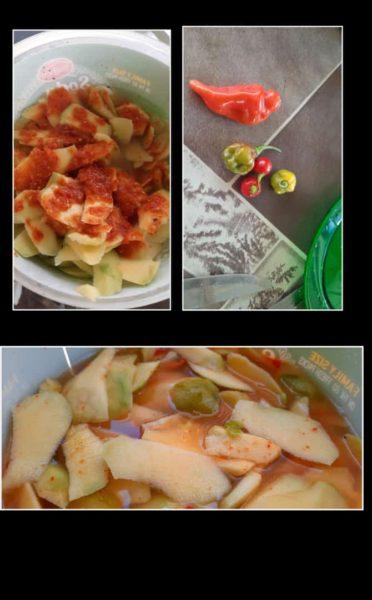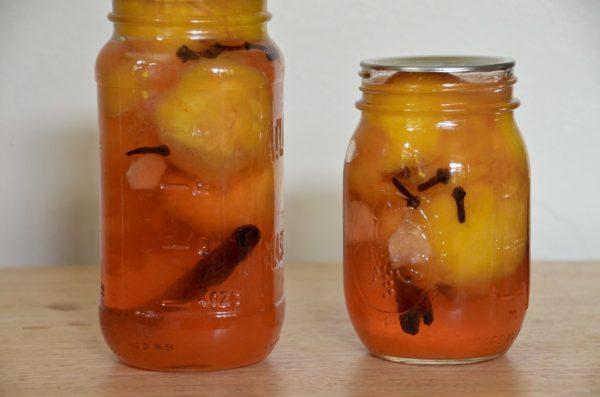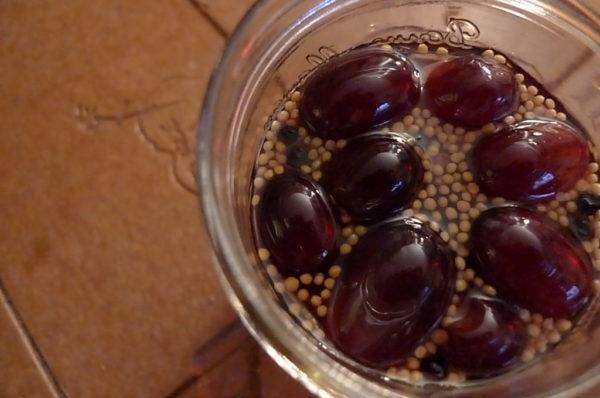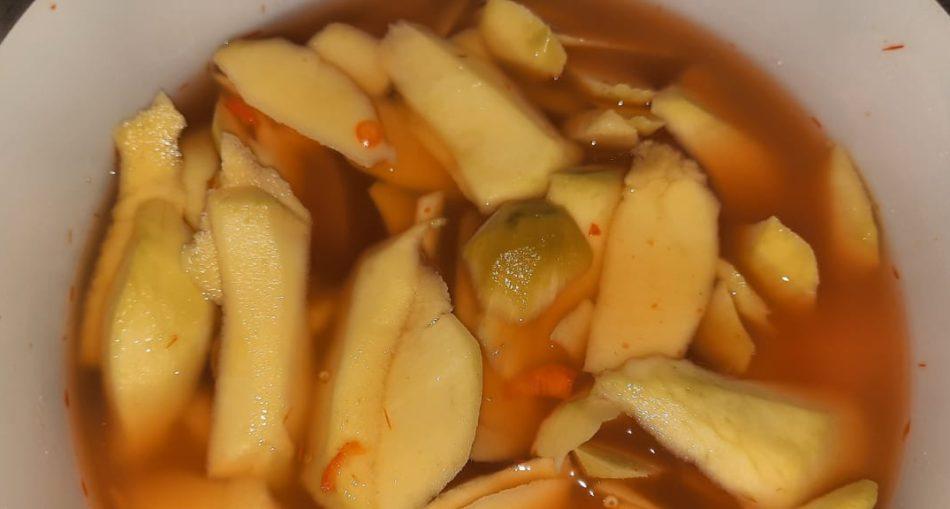Pickled fruit can commonly be found selling by street vendors in Guyana. No street stalls that were constructed can be found without glass jars filled with pickled fruits of all varieties such as mango, genip, gooseberries, and practically any other fruits you can think of. It can easily be prepared at home and only takes a few ingredients. They can be made using a variety of fruits or vegetables, although the most common pickled fruits in Guyana are Mango, Golden Apples, and Jamoon. This salty and spicy mixture makes for a mouth-watering experience. The salivation is part of an enchanting experience. If you are not a fan of spicy foods I suggest you stay away from this concoction.
The method of pickling has been an ancient form of food preservation. Vinegar is often the substance of choice to have fruits or vegetables immersed including fish and other types of meat. A higher salt content prevents micro-bacteria to form.
Fun Fact: Pickling likely first originated in ancient Mesopotamia around 2400 BCE.
Origin
Pickling fruits and vegetables have long been practiced worldwide as a way of preserving these foods. Asinan is a pickled Indonesian fruit or vegetable snack which is preserved in brine. The method of pickling fruits and vegetables is meant to have its origins in Persia. The Pakistan pickle is known as “Achaar”.
Fun Fact: Asin in Indonesia means “Salty”
Many regularly consumed items are pickled in the Philippines, where pickling is a popular method of food preservation. This is generally done with big earthen jars. The method is referred to as buro or binuro. Prior to the invention of refrigeration, the archipelago used pickling to preserve a wide variety of foods, including fish, but it is currently only used with vegetables and fruits.
Traditional pickling involves submerging fruit or vegetables in salt brine, and holding them underwater with flat stones piled on top. Alternatively, if the lid is able to release pressure brought on by a buildup of carbon dioxide, a tight lid or one with an air trap may be employed. On the surface, mold or (white) kahm yeast may develop; kahm yeast is generally safe but can sometimes lend an odd flavor; it can be eliminated without harming the pickling process.
In chemical pickling, the fruits or vegetables to be pickled are put in a sterilized jar with spices, vinegar, or both, and brine. The jar is then left to mature until the pickled food has the flavor that is desired.
The fermentation of fruits like pineapple and apples is a major source of vinegar in Mexico, and people utilize this naturally occurring vinegar to pickle fruits and vegetables at home. The pickled pepper, which comes in a wide variety, is highly well-liked in Mexico and is one of the principal products produced both at home and by the pickling business.
Two Types Of Asinan :
- Asinan Betawi: The preserved Chinese cabbage, cabbage, bean sprouts, tofu, and lettuce that the Betawi people of Jakarta eat as asinan are served with a thin, hot, peanut sauce that contains vinegar and are topped with peanuts.
- Asinan Bogor: The preserved tropical fruit asinan of Bogor city, West Java, is eaten with peanuts and a sweet, hot, and sour vinegar and chili sauce. It includes raw mango, water apple, papaya, and pineapple.
Here is a recipe for Guyanese Style Mango Pickle along with Benefits:

Preparation of Pickled Mango. Photo Credits: Totaram Singh
a.com/pickle-mango-guyanese-style/
Other Fruits That Can Be Pickled Include:
- peaches
- apples
- crab apple
- pears
- plums
- grapes
- currant
- tomato
- olives
How To Pickle Peaches
Medium-sized, small-seeded, non-melting clingstone peaches can be used to make pickled peaches. Some were made using tiny, underripe freestone peaches have been used in the United States before 1960. ‘Sweet spices’ like cinnamon, cloves, and allspice, as well as savory pickling spices like peppercorns and coriander, can be used to give flavor to the pickle. Pickled peaches can be used in salads, with meats, and for other purposes.

Pickled Peaches. Photo Source: https://www.flickr.com/photos/irisphotos/14971559721
Pickled Grapes
White wine vinegar, water, kosher salt, sugar, garlic cloves, rosemary, and dried chili flakes are all required for the pickling of grapes. Grapes have a distinctive flavor that comes from garlic, chili flakes, and other species.

Pickled Grapes in Cinnamon. Photo Source: https://www.flickr.com/photos/cuttlefish/3479481635
Pickled fruits and Vegetables have been a cultural dish in Guyana for many decades. The excitement of going to a stand and buying a bag filled with mango, salt, and pepper and having to vigorously rub the bag in order to create the spicy sauce brought about an unexplainable joy, especially as a child.
References:







